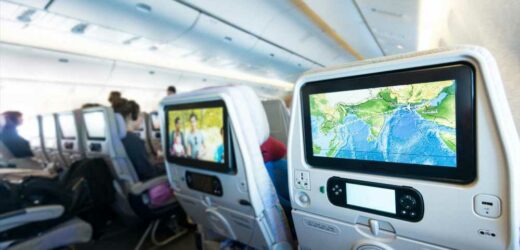A TRAVEL expert has revealed the scary reason why plane headrests are often curved.
Anthony Harcup, Senior Director at design house Teague who works with Boeing explained it is due to something called "delethalization".

This means that everything inside the plane cabin including the seats and lockers are designed to reduce the chance of passengers being able to hurt themselves.
According to the New Yorker: "Nearly every element undergoes a safety-enhancing process called 'delethalization': seats have to withstand an impact equal to sixteen times the force of gravity."
Mr Harcup told DMARGE the curved seats also "ensure that when subjected to Murphy’s law [if anything can go wrong, it will], a passenger can’t hurt themselves on any part of the aircraft seat.”
He gave an example of this in a cabin he had designed with Boeing, and explained it isn't just for safety issues – he also says it is to create an "inviting aesthetic" to passengers, which is why the overhead bins are also often curved.
He said: "Hard edges don’t sit well against this back-drop. We worked in partnership with Adient Aerospace seating to develop an economy seat that would echo and enhance the softness in this environment.”
“One stand-out feature is the shape of the headrest – which was designed to echo the shape of the window reveals to create a more cohesive passenger experience."
Most read in News Travel
WRONG CALL Ryanair passengers stopped from boarding after airline gets Covid rules wrong
Covid travel rules for popular holiday destinations – including Germany
I'm a hotel worker and customers always ask the same thing at check in
Woman left stunned by HUGE list of rules at holiday rental
He added: "The interior elements flow from one to another, complimenting the tubular environment and ‘wrapping around’ the customer (like a huge car interior!)."
There is also a scary reason why plane windows are always curved too – due to two major plane crashes.
Flight 781 from Rome to London crashed in 1954, just 15 minutes after taking off, while a second crash from London toJohannesburg on Flight 201 happened just months afterwards.
The windows, which were square at the time, played a big role in the metal fatigue that caused the crashes, resulting in explosive decompression and the plane breaking up mid-air.
The sharp corners of the windows put the surrounding metal under extra stress in high altitudes — as much as two or three times more than other places on the plane.
Here are the safest seats to sit in during a flight, if you are a nervous flyer.
And a flight attendant has revealed the most dangerous thing passengers often do during a flight.

Source: Read Full Article






